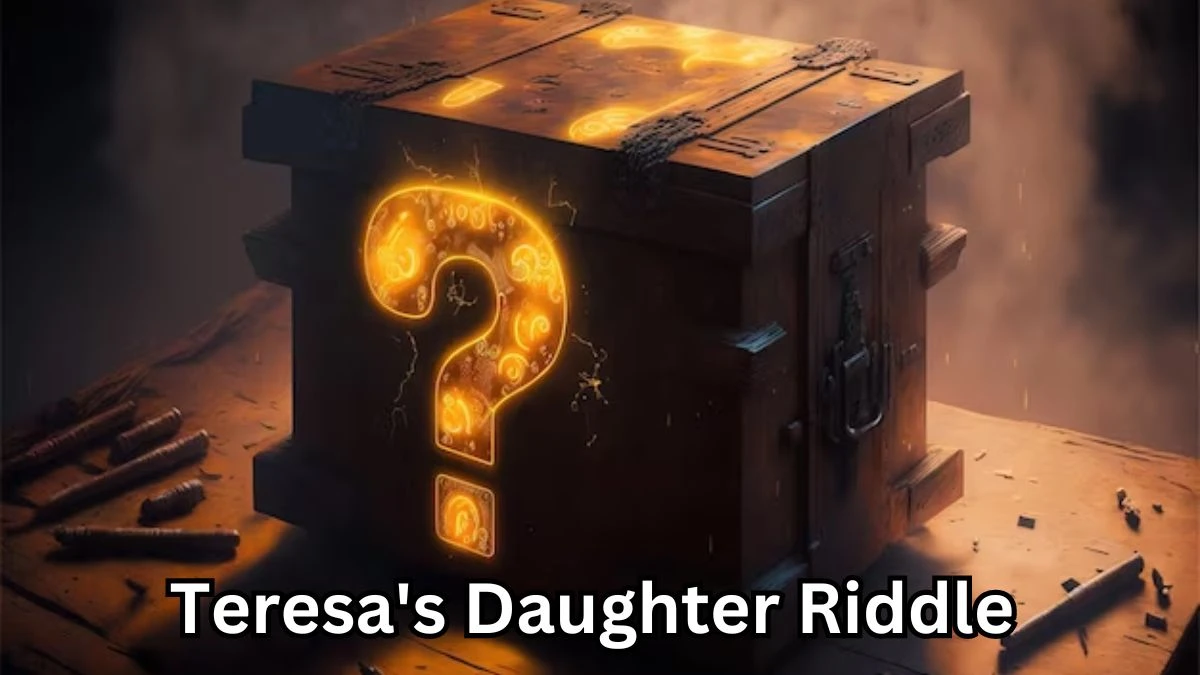- Rojgarlive »
- Riddle »
- Teresa's Daughter Riddle and Answer
Teresa's Daughter Riddle and Answer
by S Samayanka
Updated Feb 05, 2024

Teresa's Daughter Riddle
The "Teresa's Daughter" riddle is a captivating puzzle circulating online. In this brain teaser, participants must untangle a complex web of familial connections involving Teresa and her daughter. The riddle presents a seemingly straightforward question but cleverly embeds a mind-bending twist, challenging individuals to think critically about the relationships described.
The enigma's origin remains unclear, but its enduring popularity has led to widespread discussions and calculations. Solving the riddle requires a keen understanding of the relationships hinted at in the concise wording.
As enthusiasts grapple with this challenge, the "Teresa's Daughter" riddle showcases the timeless appeal of brain teasers that engage and captivate individuals, inviting them to unravel the intricacies of familial ties in a clever and entertaining manner.
Riddle: If Teresa's daughter is my daughter's mother, what am I to Teresa?
- Grandmother
- Mother
- Daughter
- Granddaughter
- I’m Teresa
Teresa's Daughter Riddle Answer
The solution to the "Teresa's Daughter" riddle lies in a clever twist that inserts the reader into the scenario from the beginning. The revelation is that the reader is, in fact, Teresa's daughter, as the riddle states, "If Teresa has a daughter who is also the mother to your daughter… you are Teresa’s daughter."
Breaking it down, Teresa becomes the grandmother to the reader's daughter, making Teresa the mother of the reader. The multiple-choice answers can be misleading, but the key is recognizing that the reader is already an integral part of the riddle.
The question, "If Teresa’s daughter (YOU) is MY daughter’s mother, what am I to Teresa?" holds the answer, highlighting the importance of careful reading and self-inclusion in unraveling the familial connections embedded within the playful and intriguing "Teresa's Daughter" riddle.
Answer: 3. Daughter
What is Riddle?
A riddle is a form of enigmatic expression that challenges the intellect and encourages creative thinking. It typically presents a puzzling question or problem, often in a metaphorical or allegorical manner, with the goal of teasing out a clever and unexpected answer.
Riddles have been an integral part of human cultures throughout history, serving as a source of entertainment, mental stimulation, and sometimes even educational tools. They exist in various forms, from verbal puzzles to written or visual conundrums. Riddles often require lateral thinking, as they demand individuals to approach problems from unconventional angles to arrive at a solution.
In essence, a riddle is a playful and imaginative exercise that invites individuals to engage their cognitive abilities, fostering a sense of curiosity and the joy of unraveling mysteries. Whether used for amusement, social interaction, or intellectual development, riddles endure as timeless expressions of human ingenuity and the universal desire for mental challenges.
Benefits of Solving Riddle
- Mental Exercise: Engaging with riddles provides a mental workout, enhancing cognitive abilities and boosting critical thinking and problem-solving skills.
- Language Development: Riddles, often filled with wordplay and clever language usage, contribute to the enrichment of vocabulary. Regular exposure improves linguistic creativity and proficiency.
- Cultivation of Creativity: The process of unraveling riddles encourages thinking outside conventional boundaries, fostering creativity and imaginative thinking.
- Entertainment and Social Interaction: Solving riddles is an enjoyable activity, offering entertainment and amusement. It can be a social experience, promoting interaction and friendly competition.
- Educational Insights: Riddles often convey cultural or historical insights, serving as a playful means to learn about language, traditions, and societal aspects. They can be incorporated into educational settings for engaging learning.
- Confidence Building: Successfully solving challenging riddles instills a sense of accomplishment, boosting self-confidence, and encouraging perseverance when faced with mental challenges.
- Memory Enhancement: Recalling information from riddles contributes to memory improvement. The mental effort involved in solving them strengthens memory retention.
- Logical Reasoning Development: Riddles typically follow a logical structure, guiding individuals through a sequence of thoughts or deductions. This aids in the development of logical reasoning skills.
Teresa's Daughter Riddle - FAQs
The reader is Teresa's daughter, making the answer "Daughter."
The reader is already part of the scenario, and recognizing this is key to unraveling the familial connections.
Riddles have been a source of entertainment, mental stimulation, and even educational tools throughout history.
Solving riddles provides mental exercise, enhances language development, cultivates creativity, offers entertainment, and contributes to educational insights.
Riddles serve as mental exercises, fostering critical thinking, language development, and creativity.




